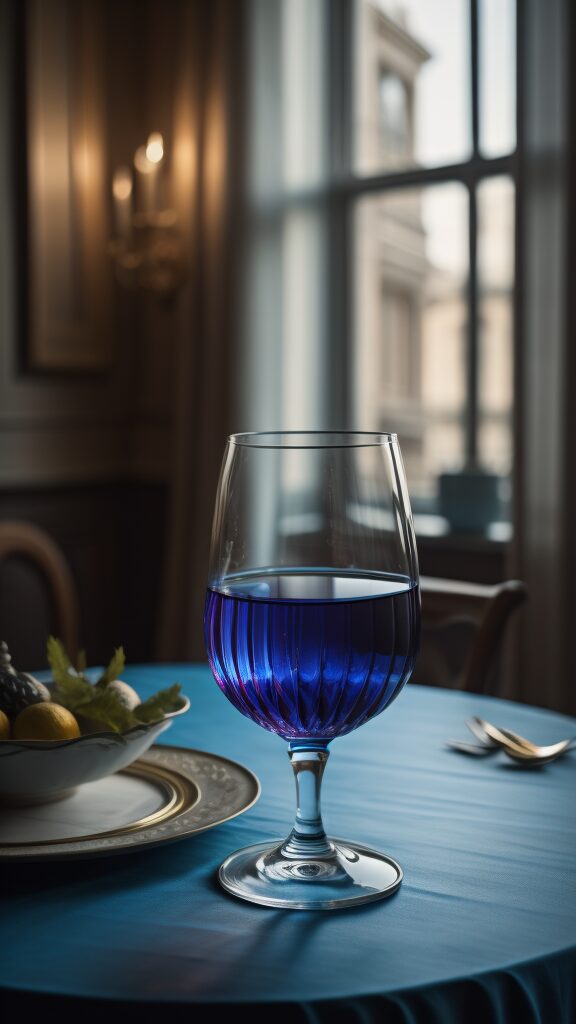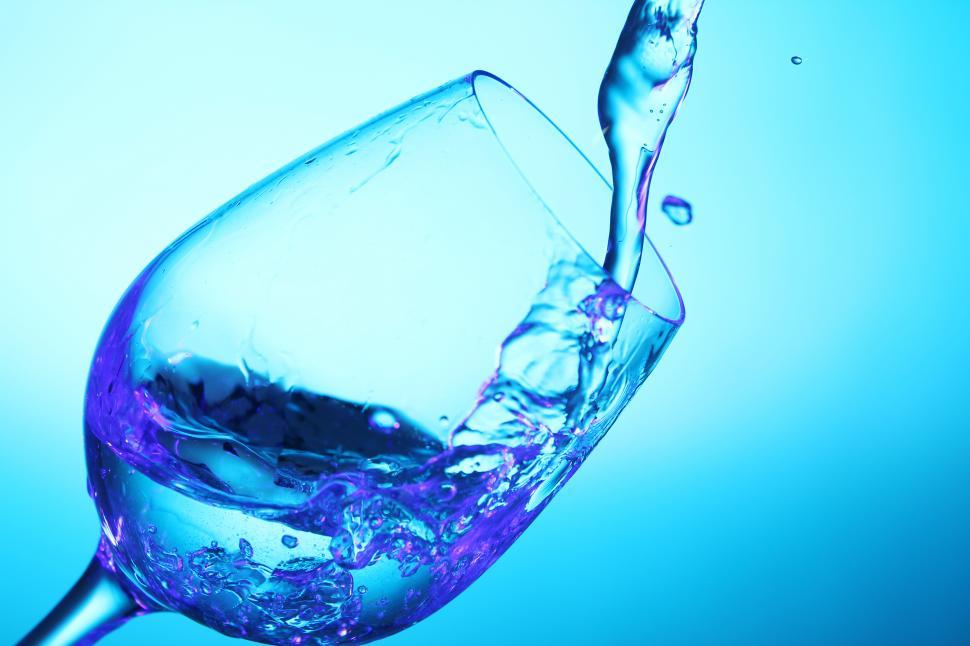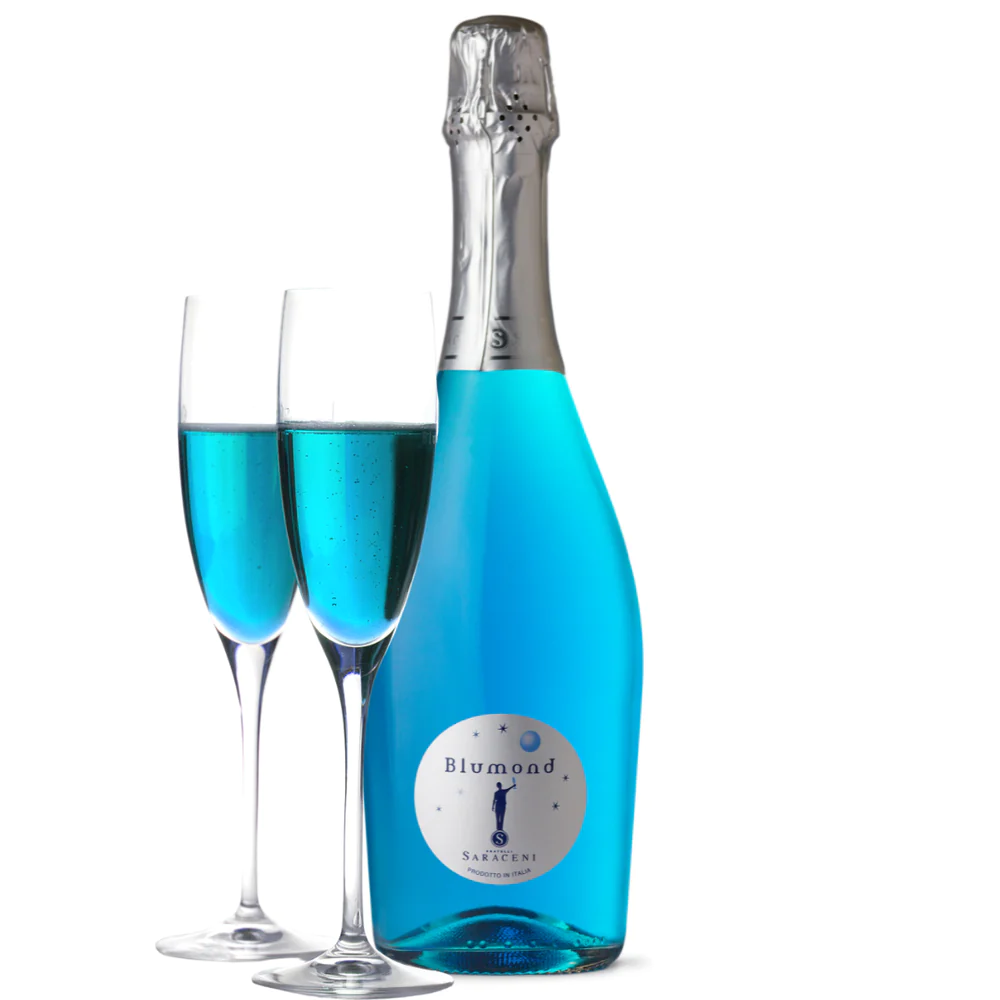
You’ve probably seen wines bottled in stunning cobalt blue glass, but have you seen blue wine? The strange and stunning color is unexpected and radically different from everything on the market, but you’ll be amazed and presently surprised by this tasty novelty.
While the taste can vary from one bottle to the next, you can expect fruity notes of passion fruit, blackberry, and blueberry, along with a sweetness that can range from off-dry to very sweet. It’s sure to be a huge conversation starter at any dinner party, but if you’re on the fence about whether or not you want to try it, keep reading!
What is Blue Wine?
Before 2015, there was no such thing as blue wine! This relatively new invention was born from the imagination of French start-up entrepreneur René Le Bail. Gïk Blue Wine came into existence thanks to an unconventional approach to winemaking.
Made from a blend of red and white grapes, the striking color comes from naturally occurring pigments anthocyanin, indigo, and butterfly pea flour.
What does Blue Wine Taste Like?
The first thing you’ll notice when you sip blue wine is its fruitiness and sweetness. You’ll also be able to pick up tropical and citrus notes, along with floral aromatics. For those that have a sensitive enough palate, you might be able to taste the herbal and botanical undertones.
These wines are relatively new and evolving, so the taste can vary slightly from one brand to the next.

Why are there Blue Wine Bottles?
Blue wine might be a relatively new invention, but blue wine bottles have been around since the late 19th Century! Dark green and amber bottles might be a bit more traditional, but blue wine bottles offer up the same functionality with a bit more flair.
Dark colored bottles help to block out harmful UV rays that could lead to the deterioration of wine, but choosing one color over another comes down to aesthetics. Cobalt blue bottles really jump out in the wine aisle, which makes it great for differentiating them from another brand.
Apart from distinctive branding, there’s also tradition associated with the color choice. When blue bottled wines first became available, there were associated with prestige and luxury.
Best Blue Wines

Saraceni Blumond Blue Bubbly
Refreshing, naturally light and sweet, and deliciously flavorful. The nose is dominated by aromas of peach, it has an elegant fine mousse, with the sweetness well balanced by a lively acidity. Best served chilled, it makes any moment one to remember.
Frequently Asked Questions
What wines are blue?
The world’s first blue wine was crafted from a combination of red and white grapes, along with organic pigments and flavors, to produce a sweet, electric-blue beverage. While technically a dye, the color comes from a naturally occurring pigment found in red grape skins — anthocyanin — as well as indigo.
Is there naturally blue wine?
There’s some debate over whether or not there’s any naturally blue wine, since some “blue” wines have been found to continue popular food-grade dyes. While many red grape varietals include a naturally occurring pigment that helps produce that electric blue color, there’s no blue grape, or single varietal that gives you that stunning hue.
What wine brand has blue in the name?
Blue Nun is a successful wine label based out of Germany, but despite having a “Blue Edition,” none of their great wines are actually blue! Blue Nun has been around for 100 years, whereas blue wine wasn’t a thing until 2016.
What is the benefit of blue wine?
There might be some benefits to blue wine other than its stunning hue. If you’re a red wine drinker, you can appreciate that the blue color isn’t as harsh on your teeth. The pigments and antioxidants present in the wine can also have some health benefits, as long as it’s enjoyed in moderation.
What kind of wine comes in blue bottles?
While the blue bottle isn’t always indicative of style, Moscatos, German wines or wines from coastal regions are often packaged in blue bottles
What does a blue wine bottle mean?
Most often, a blue wine bottle is chosen for aesthetic appeal and branding. The dark colors are chosen for UV protection and to prevent the wines from oxidizing, so there’s no major difference between a dark green wine bottle and an amber wine bottle.
Are blue glass bottles rare?
While cobalt blue bottles aren’t rare, they’re less commonly used than dark green and amber. The darker colors help to prevent the wine from oxidizing by providing UV protection. Blue bottle wines are afforded the same protections, but one reason a winemaker might choose blue over another color is because of its distinction. There’s also historical significance, since cobalt blue glass bottles were considered to be symbols of prestige and luxury.
Other Blog Posts You’ll Love
Best Moscato Wine: Your Complete Guide
Top 10 Best Sweet White Wines to Try
Best Champagne & Sparkling Wine: Your Complete Guide
